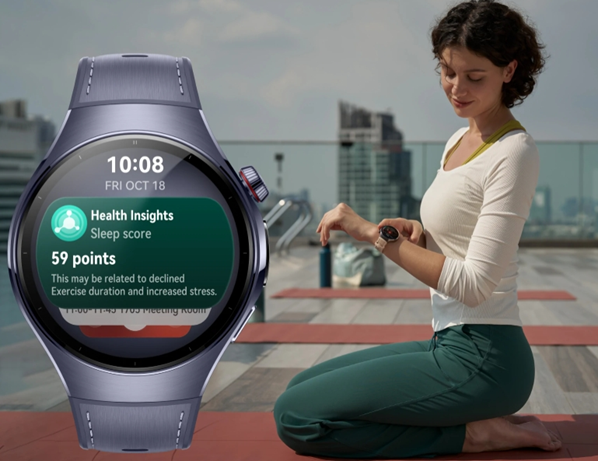AI is at the forefront of transforming wearable technology in 2025. The fusion of AI into wearables creates devices that are more intuitive, efficient, and tailored to personal needs, offering greater accuracy and enhanced functionality. This transformation is not just about assessing data; it’s about providing real-time insights that empower users to make informed decisions quickly. With advanced AI, wearables significantly improve lifestyle and health management, offering unprecedented levels of support, accuracy, and personalization that make them essential to modern living.

How AI is Revolutionizing Wearable Tech
AI’s Role in Personalization and User Experience
AI enables wearables to offer deeply personalized experiences. By analyzing user behavior patterns, these devices tailor functionalities to individual preferences, learning from interactions and predicting needs. They offer suggestions and adapt to users’ evolving habits, making wearables intuitive and responsive. This creates a seamless and personalized experience that enhances how users interact with their devices. As wearables continue to adapt and evolve, they become an intrinsic part of daily life, intuitively anticipating user needs and providing real-time assistance.
AI for Real-Time Data Processing and Insights
Wearables powered by AI can process vast amounts of data in real-time. This capability allows for immediate insights, facilitating prompt feedback for users and enabling faster decision-making. Whether tracking health metrics or optimizing exercise routines, AI processes information swiftly and accurately, offering actionable insights that enhance safety and overall performance. This real-time processing significantly elevates user trust in wearables, allowing them to monitor critical metrics continuously while receiving quick and reliable feedback for optimal health and fitness outcomes.
Enhancing Wearable Device Performance with AI
AI significantly boosts wearable device performance by streamlining operations and optimizing energy use. It ensures longer battery life without compromising functionality, adjusting features dynamically to maintain efficiency. Through AI-based algorithms, wearables can self-optimize, reducing latency and improving responsiveness, ensuring smooth, continuous performance. This self-optimization helps preserve battery life and keeps wearables functioning at peak efficiency. By minimizing the need for manual adjustments, AI-powered wearables provide users with a seamless, reliable experience that enhances usability while maintaining optimal performance throughout the day.
AI-Driven Health Monitoring and Fitness Tracking
Predictive Health Analytics and Early Detection
AI in wearables excels at predictive analytics, offering early detection of potential health issues. By continuously monitoring vital signs such as heart rate and blood oxygen levels, these devices can identify anomalies and alert users in real-time. This proactive approach encourages preventive measures and helps users take action before health issues escalate. Wearables that integrate predictive health analytics transform how individuals manage their wellness, reducing healthcare costs and improving long-term health outcomes by addressing potential concerns early and preventing serious health risks.
AI in Sleep and Stress Management
Wearables utilizing AI analyze sleeping patterns and stress markers to offer comprehensive insights into sleep quality and stress levels. These devices track factors like heart rate variability and restlessness to recommend personalized improvements and strategies to enhance rest and manage stress effectively. By offering actionable feedback, wearables help users optimize sleep routines and reduce stress, ultimately promoting better mental health and improving overall quality of life. With AI, wearables are increasingly becoming essential tools for better sleep and stress management in daily life.
Integrating AI with Smart Sensors for Better Accuracy
Smart sensors in wearables, powered by AI, deliver higher accuracy in monitoring and analysis. By interpreting data from multiple sensors, AI creates a comprehensive view of the user’s health and fitness metrics, improving reliability and trust in the device. The synergy between AI and sensors enables precise tracking of key health indicators, such as steps, heart rate, and sleep patterns, offering accurate and actionable data. This integration enhances the user experience by ensuring reliable, real-time feedback on personal health and fitness goals.
Smart AI Assistants and Enhanced User Interactions
Voice and Gesture Control Powered by AI
AI enables more natural interactions with wearables through advanced voice and gesture recognition technologies. Users can control devices effortlessly, enhancing usability and accessibility. By streamlining command recognition, AI allows wearables to respond quickly and accurately, creating an intuitive, hands-free experience. This capability offers users a seamless interaction that fits into their daily lives and enhances convenience, enabling users to complete tasks and manage settings without needing to physically touch their device, offering a more fluid and efficient wearable experience.
Seamless Integration with Other Smart Devices
Wearables equipped with AI communicate effectively with other smart devices, creating a cohesive user ecosystem. This interconnectivity allows for the synchronization of data, activities, and routines across multiple platforms. Whether managing smart home devices or controlling connected appliances, wearables can seamlessly interact with the entire ecosystem to enhance daily life. Users benefit from a more unified and harmonious smart environment, simplifying everyday tasks, improving convenience, and boosting overall productivity through smarter, more efficient systems that work together to meet user needs.
AI as a Personal Assistant in Everyday Life
AI functions as a personal assistant within wearables, aiding users in daily tasks and reminders. From managing schedules to setting reminders for important events, AI helps users stay organized and informed. It assists in tracking fitness goals, wellness routines, and even managing personal and professional tasks. This integration into daily routines further underscores wearables’ role as indispensable tools for modern life, enhancing both personal and professional life management with intelligent automation and real-time assistance for a streamlined, balanced lifestyle.

Conclusion
AI integration is redefining the landscape of wearable devices in 2025 by enhancing functionality, accuracy, and user experience. These advancements empower users with personalized insights and improved health monitoring while fostering seamless interactions and smart integrations. For example, a smartwatch women can be tailored to specific health and wellness needs, offering an intuitive, personalized experience. As AI continues to evolve, its impact on wearables promises ongoing innovation and expansion, driving the future of wearable technology. This evolution solidifies AI’s place as an essential aspect of modern life, offering greater health management, convenience, and smarter living solutions for users everywhere.
